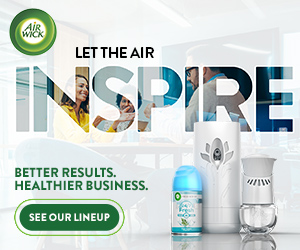The Importance Of Delivering Cleaner, Safer, Healthier, And More Sustainable Places For All People
By Stephen Ashkin, The Ashkin Group
The cleaning industry has evolved significantly over the years, with numerous achievements that have transformed it into a vital and dynamic sector. From its humble beginnings to its current state, the industry’s progress reflects society’s changing needs and technological advancements. Looking ahead, the future of the cleaning industry promises even more innovation and adaptation to address emerging challenges.
Historical Achievements:
- Sanitation in the Early 19th Century: While cleaning dates to the early Egyptians (if not cave dwellers), the professional cleaning industry’s roots can be traced to the early 19th century when public health concerns prompted the development of sanitation practices. This marked the beginning of organized cleaning efforts.
- Industrial Revolution: With the advent of the Industrial Revolution, cleaning processes became more mechanized. Innovations like the vacuum cleaner in the late 19th century and the introduction of cleaning agents in the early 20th century transformed the industry.
- Green Cleaning Movement: In the latter part of the 20th century, the industry began embracing environmentally preferable cleaning practices. This shift led to the development of green cleaning products and practices, reducing the risk to worker health and industry’s overall ecological footprint.
- Technology Integration: The late 20th century saw the integration of technology into cleaning. Workloading software, robotics, backpack vacuums, battery-powered equipment, on-site production of cleaning chemicals and use of ATP meters to measure cleaning performance are just some examples that revolutionized commercial cleaning.
- Product Standards and Whole Building Rating Systems: The establishment of industry-specific product standards, such as the European Flower or Green Seal, and whole building certifications from the U.S. Green Building Council and the International WELL Building Institute institutionalized green cleaning and protection for cleaning workers, building occupants and the environment.
The Future of the Cleaning Industry:
- Sustainability: As environmental, societal, and other concerns continue to grow, the cleaning industry will increasingly focus on sustainable practices and reporting. Beyond the products, requests for sustainability information focused on how the organization itself operates will become commonplace driven by legislators/governments, investors, consumers, employees, and market competition.
- Advanced Cleaning Technologies: The cleaning industry is poised to benefit from further advancements in technology. Innovations like smart cleaning devices, AI-powered cleaning robots, and IoT-connected cleaning systems will become more widespread, increasing efficiency, and reducing labor costs.
- Health and Safety: The COVID-19 pandemic highlighted the importance of cleaning. The industry will continue to evolve to meet new health and safety standards, with a greater emphasis on disinfection, indoor air quality, food safety, and protecting worker health.
- Customization and Personalization: Cleaning services will become more tailored to individual needs. Data analytics and customer feedback will inform cleaning schedules and methods, ensuring a more personalized experience for clients as no two buildings are alike.
- Workforce Development: To meet the growing demand for cleaning services, the industry will invest in workforce development and training. This will not only enhance the skills of cleaning professionals but also improve job satisfaction, pay, retention, and career opportunities.
- Globalization: With increased globalization, cleaning companies will need to adapt to diverse cultural norms and regulations, leading to the development of more versatile and adaptable cleaning solutions.
In conclusion, the cleaning industry has come a long way from its origins, with a rich history of achievements that have shaped it into the essential sector it is today. As we look to the future, the industry is poised to continue its evolution, driven by sustainability initiatives, technological innovations, and a commitment to meeting the evolving needs of society. The cleaning industry of tomorrow promises to be more prosperous as it delivers cleaner, safer, healthier, and more sustainable places for all people.
Steve Ashkin is widely considered the “Father of Green Cleaning.” He currently co-chairs ISSA’s Sustainability Committee and serves on the US Green Building Council’s technical committee for LEED for Existing Buildings, where he advocates for the global cleaning industry. He can be reached at Steve@AshkinGroup.com.








